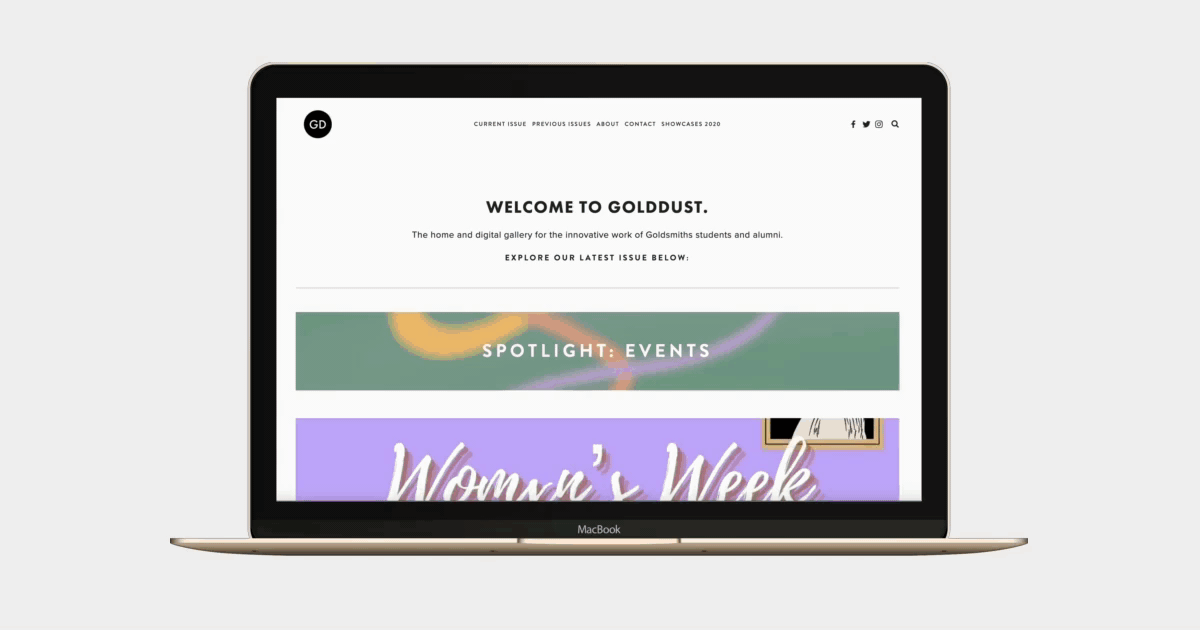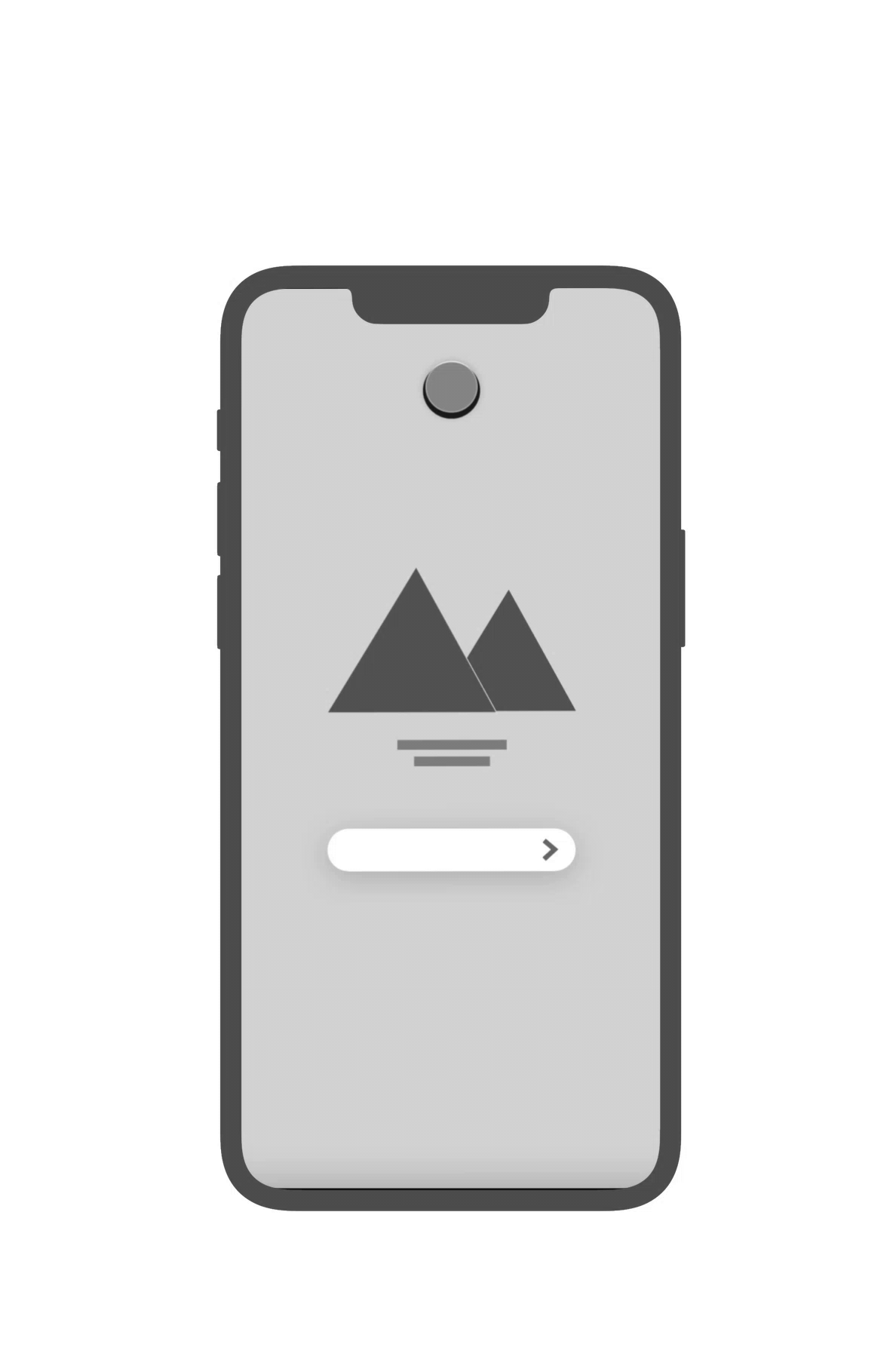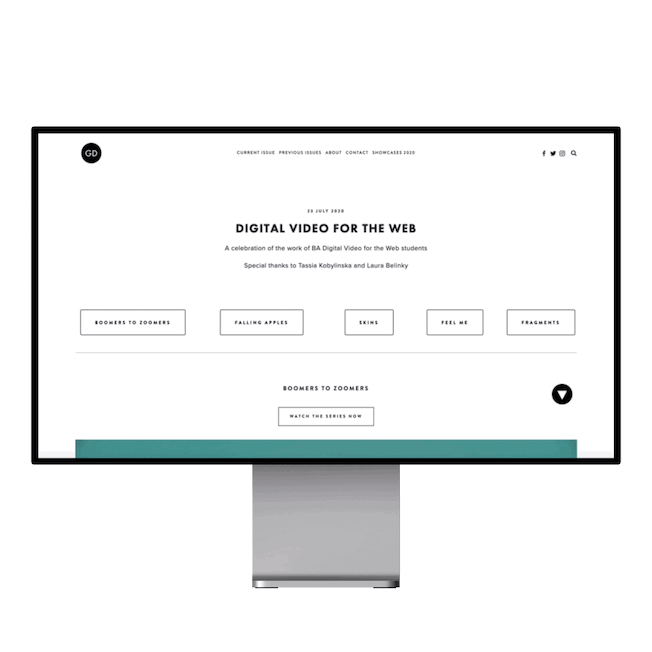
SUMMARY
I built the first and only digital-only magazine hosted by Goldsmiths, University of London to showcase groundbreaking creative work produced by students and alumni.
THE PITCH
Goldsmiths, University of London prides itself on the revolutionary creative work produced by its students in multiple faculties. Well-known names such as Damien Hirst, Steve McQueen, and Vivienne Westwood have walked through the Goldsmiths hallways and made their impact globally.
And while student-run collectives already exist to showcase the brilliant minds of students and alumni, those spaces often focused on print work, and only featured specific genres. Thus, the concept of GoldDust was born - a fully-digital magazine that encompassed the diversity of creative output, accessible anywhere, at any time.
Transitioning the core elements of a magazine (cover art, contents) to the new platform.
Mapping the user experience of the mobile version of the platform to ensure true accessibility.
Identifying end user needs and finding the best ways to present creative work on the platform.
1
2
3


TRANSFORMING THE DIGITAL SPACE
GoldDust was premised to merge the physical magazine with the digital world. So I set out in my team, drawing mockups of what this would look like. This involved:


At the beginning of the pandemic, I was approached by senior staff at Goldsmiths to use the GoldDust platform to host virtual degree shows in the summer of 2020.
Degree shows are one of the most exciting times of the year for students, but due to the coronavirus pandemic the College had to close for most of the academic year. With GoldDust's reputation climbing higher among University of London circles, now was the perfect time to bring GoldDust closer into the university, giving it an official status internally, bridging the gap between student and alumni-led spaces, and university-led spaces.
GOLDDUST IN THE PANDEMIC
I worked with my team to map out how the virtual degree shows should appear on the platform. While we were tight on time, and relied heavily on the nature of the content that was being delivered to us, we held true to our values of delivering high-quality, content-focused shows for students and staff to enjoy. This involved improving GoldDust's adaptability for the degree shows on different devices, displaying the live-streams and digital programmes in an accessible way.
In the process, we also faced the challenge of new territory. Degree shows, famously, have always been a physical experience. Wandering through different faculty buildings, allowing yourself to become immersed in the environment around you. There has never been a development of virtual degree shows on such a mass scale before, and all of a sudden universities across the country were now investing in ways to enhance that experience.
This also meant there was a lack of research done in the field. Would users visit the degree show on their phones or laptops? What methods could we use to make it feel less like a display of work, and more like a virtual experience?
OVERCOMING CHALLENGES
Looking back, it would have helped to have more time to invest into improving the virtual degree show experience. Although, at GoldDust we have always been proud of our content-focused, minimal approach. We believe in letting the creative work do the talking, and building around that.
That's exactly what we did for the virtual degree shows. We placed the content front-and-centre and built the secondary features of the shows, e.g. the programme, info about the artist, around the work. Then we implemented elements to make the experience feel more interactive, delivering a high-quality experience.


